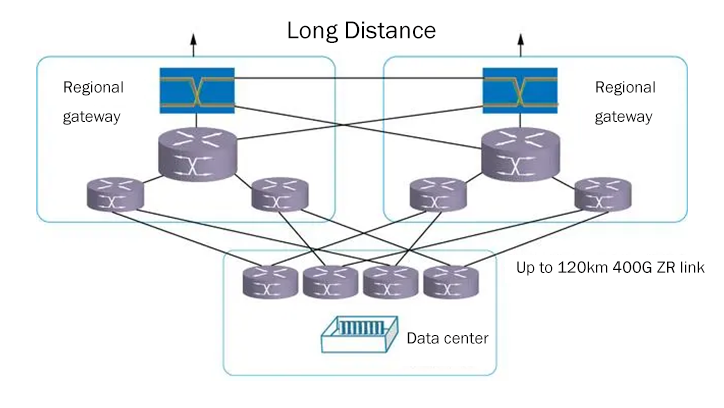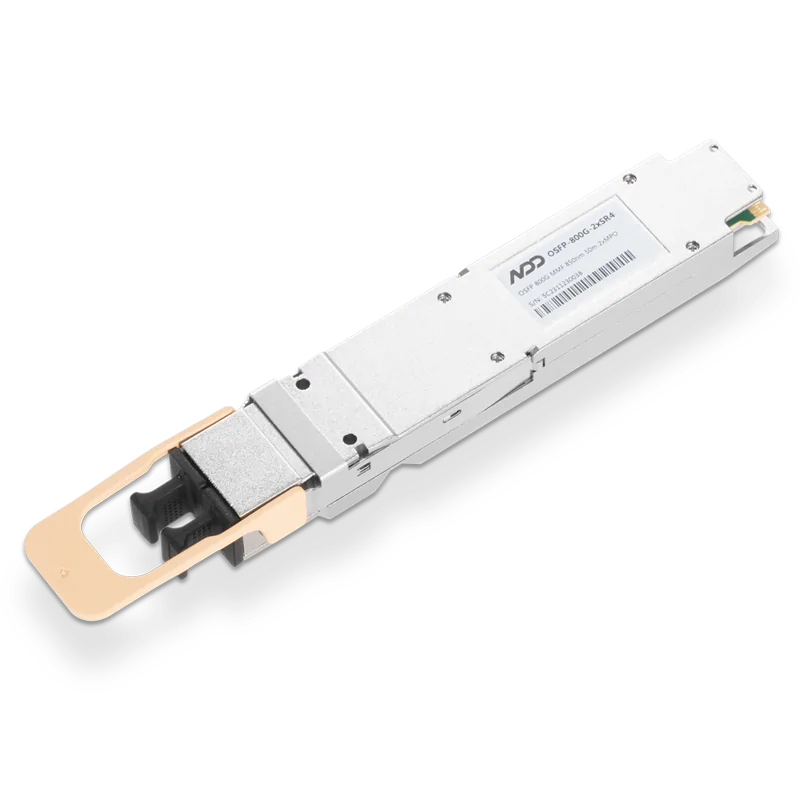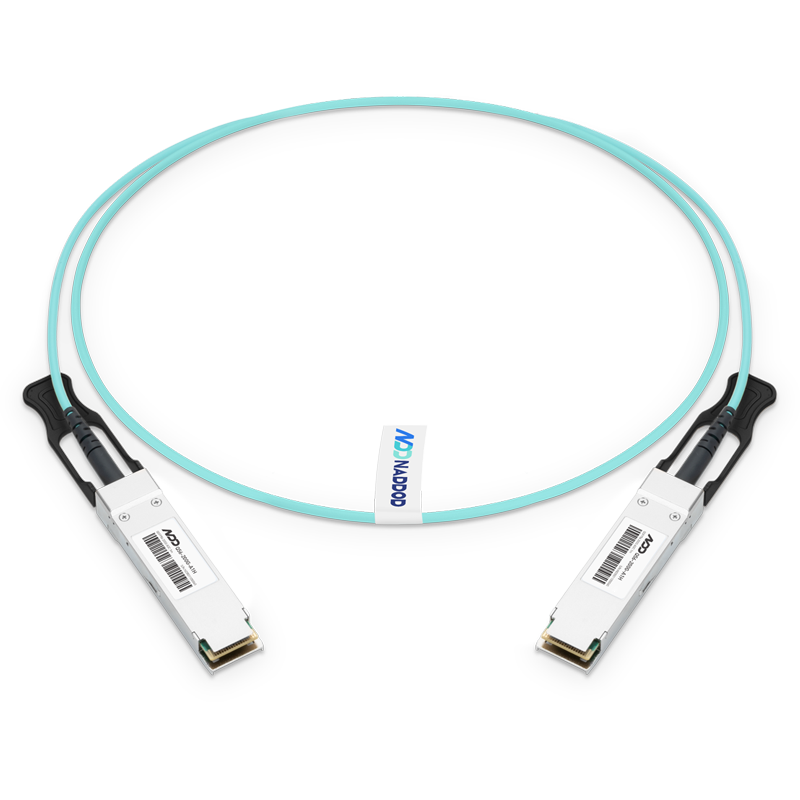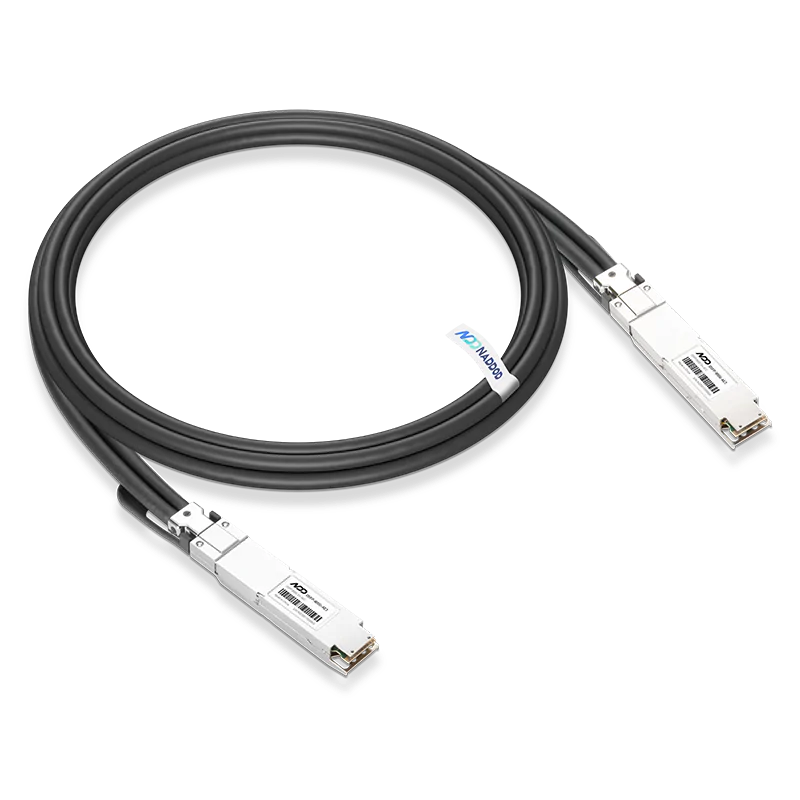Continued growth in bandwidth demand is putting pressure on cloud providers to increase data center interconnect (DCI) in order to connect facilities around the globe, driving the emergence of new architectures. These architectures allow client optical devices to support coherent transport in the same package, thus meeting connectivity needs in a cost-effective manner. 400G pluggable optical modules are designed to plug directly into switches and routers, providing the same density for coherent DWDM and client optical devices in the same rack.
This paper looks at bringing 400G pluggable optical modules to market, starting with the 400G standards including 400ZR, OpenZR+ and Open ROADM MSA.
400G Standards
400ZR
At the end of 2016, a new project called 400ZR was proposed in the Optical Interconnect Forum (OIF), which targets DCI edge applications up to 120km long with a target power consumption of less than 15W.

The comparison of the power tradeoff between modulation format and baud rate requires the use of 16QAM at approximately 60Gbaud, and a cascaded (hard verdict + soft verdict) FEC that selects devices that support low power consumption and sufficient coding gain for edge applications.
While 400ZR benefits from well-defined target applications, certain carrier applications require features not included in the 400ZR standard, such as support for multiple rates, multiplexing capabilities, and support for other protocol types, such as OTU4 DWDM. carrier applications also have higher performance requirements than 400ZR and lower density requirements. For these carrier applications, the CFP2-DCO package provides a good combination of performance, pluggability and density.
OpenROADM MSA
With these different priorities, the OpenROADM MSA defines a framing method that supports line speeds of 200G, 300G or 400G, greater host interface flexibility, and the choice of a new high-performance soft-verdict FEC (called openFEC) that offers higher coding gains than proprietary technologies, typically used for long-distance transmission.
During the same time frame, CableLabs developed a consistent interconnect standard to address the access aggregation requirements of the fiber industry. The standard targets data rates of 100G and 200G. The application has its own unique set of requirements, but CableLabs recognizes the benefits of aligning with other organizations’ standards. The decision to align with the 100G and 200G standards in OpenROADM provides the best combination of benefits for this application, including high performance openFEC for 200G. the standard uses the common protocols of OpenROADM, but defines optical specifications that can meet the specific requirements of fiber access aggregation applications.
OpenZR+
In late 2019, a new model was introduced that combines 400ZR Ethernet traffic, the performance of the OpenROADM specification, and multi-vendor interoperability to provide network operators with an efficient solution for DCI with a transmission range of more than 120km, dubbed OpenZR+. openZR+ maintains the simpler Ethernet-only host interface of 400ZR, but But adds support for multi-rate Ethernet and multiplexing capabilities for 100G, 200G, 300G or 400G line interfaces, and uses the higher dispersion tolerance and higher coding gain available in the OpenROADM MSA and CableLabs option for standardized openFEC. These enhancement modes allow OpenZR+ modules in QSFP-DD or OSFP packages to support coverage well beyond 400 ZR.
The above 400G standards meet the demand for long distance interconnection from data center to data center. As for the short distance interconnection needs within the data center, NADDOD believes that for the long term, parallel data center is the optimal solution. Therefore, 400G parallel optical interconnect products, 400G QSFP-DD SR8 and 400G QSFP-DD AOC, have been launched.
As 400G continues to evolve, it is shifting to advanced packaging technologies that focus more on leveraging the benefits of silicon photonics. This combination improves performance, reduces power consumption, and has the potential for scalability and reliability in a small, affordable package. NADDOD has introduced 400G QSFP-DD DR4 parallel optical modules based on silicon optical technology further refine and enrich 400G parallel solutions.
Related Resources:
400G Optical Transceiver Module Types
Typical Solutions for 400G Data Center
Typical Connection Solutions of 400G Optical Transceivers and Cables
The Next Station of Data Center Networks—200G vs 400G
400G Optical Module Application Scenarios
100G & 400G Optical Transceiver Marketing
Four Types of Typical 400G Network Solution Plan Explained
400G QSFP-DD FR4 vs 400G QSFP-DD FR8
A Beginner Guide: What is 400G Optical Module?
FAQs for 400G Transceivers and Cables

 800GBASE-2xSR4 OSFP PAM4 850nm 50m MMF Module
800GBASE-2xSR4 OSFP PAM4 850nm 50m MMF Module- 1What Do You Know About Armored Fiber Optic Cable?
- 2How Does Transceiver Forward Error Correction (FEC) Work?
- 3QSFP28 ZR4, The Best Choice for 100G Long-distance DCI
- 4NADDOD 1.6T XDR Infiniband Module: Proven Compatibility with NVIDIA Quantum-X800 Switch
- 5Vera Rubin Superchip - Transformative Force in Accelerated AI Compute


































